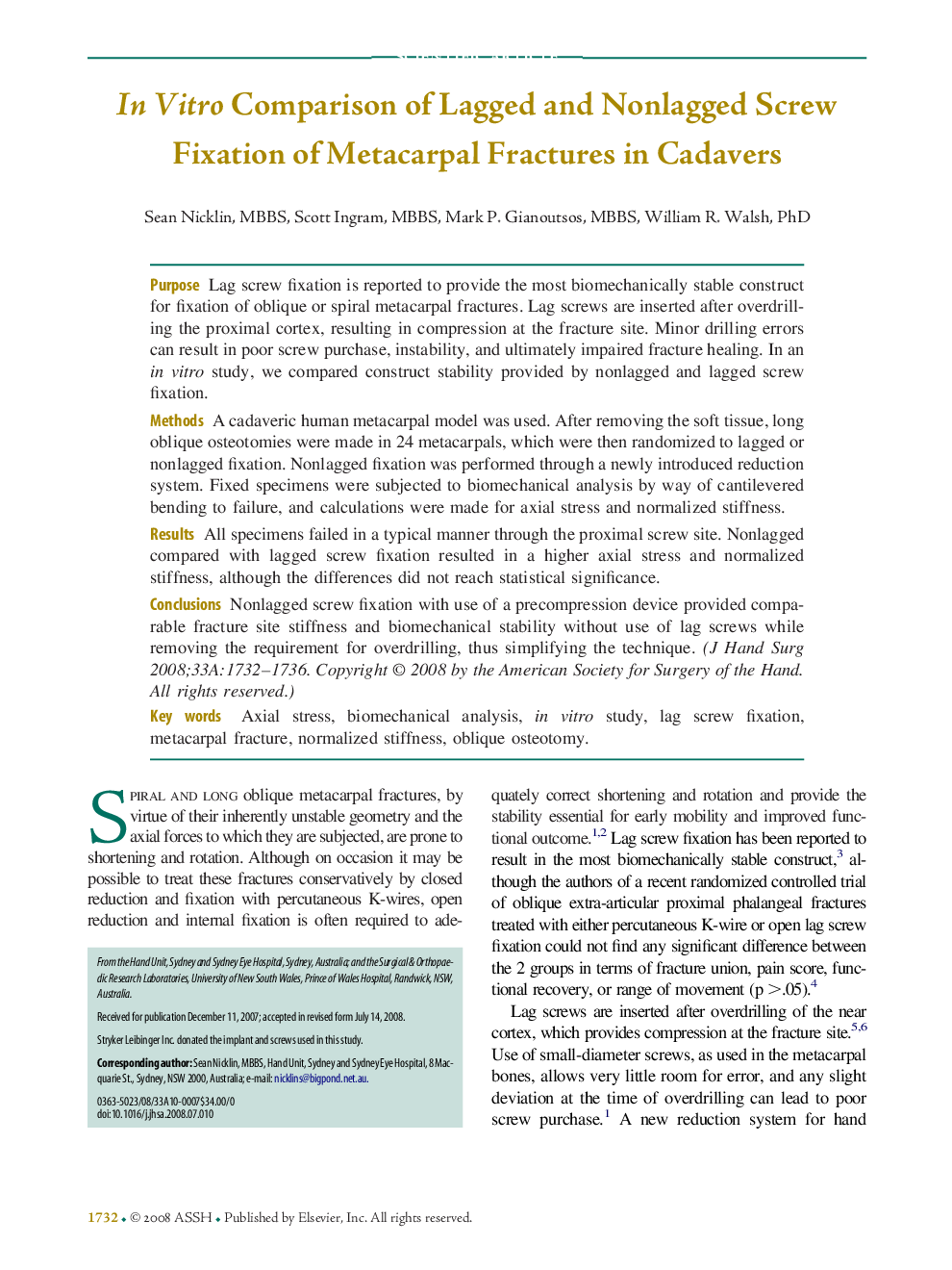| Article ID | Journal | Published Year | Pages | File Type |
|---|---|---|---|---|
| 4069518 | The Journal of Hand Surgery | 2008 | 5 Pages |
PurposeLag screw fixation is reported to provide the most biomechanically stable construct for fixation of oblique or spiral metacarpal fractures. Lag screws are inserted after overdrilling the proximal cortex, resulting in compression at the fracture site. Minor drilling errors can result in poor screw purchase, instability, and ultimately impaired fracture healing. In an in vitro study, we compared construct stability provided by nonlagged and lagged screw fixation.MethodsA cadaveric human metacarpal model was used. After removing the soft tissue, long oblique osteotomies were made in 24 metacarpals, which were then randomized to lagged or nonlagged fixation. Nonlagged fixation was performed through a newly introduced reduction system. Fixed specimens were subjected to biomechanical analysis by way of cantilevered bending to failure, and calculations were made for axial stress and normalized stiffness.ResultsAll specimens failed in a typical manner through the proximal screw site. Nonlagged compared with lagged screw fixation resulted in a higher axial stress and normalized stiffness, although the differences did not reach statistical significance.ConclusionsNonlagged screw fixation with use of a precompression device provided comparable fracture site stiffness and biomechanical stability without use of lag screws while removing the requirement for overdrilling, thus simplifying the technique.
